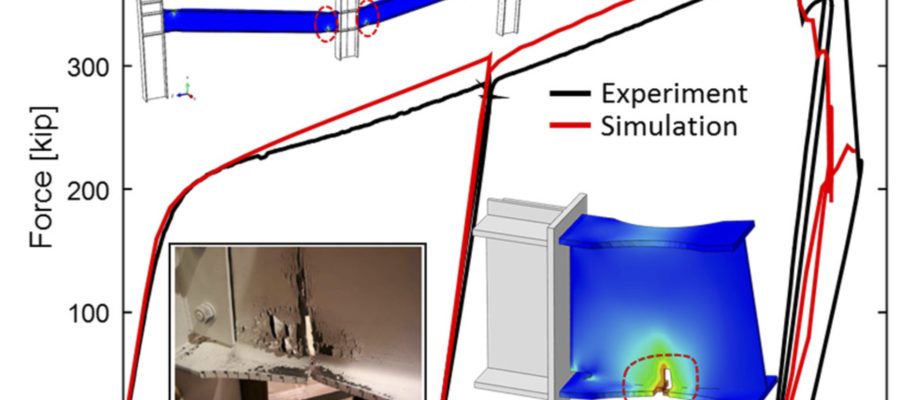Simulation of steel structures has advanced markedly in the finite element age and today models that include buckling and yielding (geometric and material nonlinearity) are relatively common; however, fracture has remained difficult to model and generally requiring too much computational power to have broad use in structural engineering. SDII researchers have adapted, extended, and validated a method for including fracture in simulations of steel structures. This capability opens the door to advanced simulations of the details that connect steel diaphragms to structural frames. Similar advances in concrete modeling are also being investigated and incorporated with an aim of creating high fidelity simulations of wall-diaphragm interaction inclusive of concrete cracking and steel fracture.
Learn more about our recent advances in steel fracture from our recent conference papers at the 11th National Conference on Earthquake engineering: click here, and the 2018 Annual Stability Conference of the Structural Stability Research Council held in conjunction with the AISC North American Steel Construction Conference: click here.
